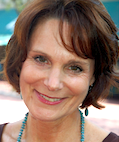Powerful Thematic Teaching and Learning
Nancy Doda and Mark Springer are co-creators (with Jill Spencer and Chris Toy) of the Alliance for Powerful Learning, a middle grades consulting group dedicated to transformative change in teaching and learning.
by Nancy M. Doda and Mark A. Springer
It’s a story of unrealized love. For over 35 years the middle school movement has articulated a passion for interdisciplinary and integrative learning. Yet after all those years of rhetoric, interdisciplinary planning and teaching remain the exception, not the norm.

We believe the time is ripe to revisit the merits of interdisciplinary, thematic teaching so that educators might continue to move from a legacy of powerful rhetoric to one of more powerful practice.
The testing conundrum
While most people agree that we ought to begin with a far more ambitious end in mind than that of merely preparing students for success on standardized tests, we must also recognize the tremendous pressures these tests exert on teachers to convey vast amounts of information that might appear on the tests.
After all, the test results are now used not only to judge student performance but the competence of teachers as well. Little wonder teachers fall back on more traditional methods to cover as much information as possible as quickly as possible, in the hope that at least some of it will stick on test day.
In our effort to revisit the promise of Interdisciplinary approaches, however, we invite you to remember that coverage does not equal enduring understanding, and mention and memorization do not enable students to apply information when called to do so. We have all known students who can answer a question in class but then have no idea what to do when the same concept is confronted in a different light. Clearly these students lack a real understanding of the concept and the process skills needed to manipulate the information.
So even if we only wanted successful test-takers, we would first need successful learners – flexible thinkers who know how to manipulate information in novel ways.
Figuring out what to do
The ever-widening circle of advocacy for interdisciplinary, thematic approaches points to this one neglected charge: developing young people who can figure out what to do when they don’t know what to do. This includes grappling with challenging problems, using knowledge appropriately to solve problems, creating products, and skillfully sharing information. In other words, our young people need to learn and practice real-world skills now, not after they leave us.

When done well, interdisciplinary studies afford students the chance to acknowledge the complexity in our world, and the need to draw upon a wide array of knowledge to study an issue, problem, or question. Likewise, delivering curriculum through a thematic lens connects any subject area content to the living world. This is immensely important as it helps us reach students who are rightfully asking: Why do I have to learn this?
Finally, as students travel from math, to science to social studies, to language arts to art itself, they are bombarded with tons of disconnected information. Neuroscientists concur that memory and understanding are increased in direct proportion to the number of connections students make with the information, and the significance they attach to it. (Sousa,1995) Creating a less fragmented curriculum would make sense then if our goal is to deepen understanding and application.
Powerful themes and provocative questions
While there are many ways to create interdisciplinary curricula, we’d like of offer guidance to those seeking to team up with one or more colleagues to plan a thematic unit. The first and perhaps most critical step is that of identifying the unit’s central theme. In the history of interdisciplinary teaching, this is where we have often fallen short. Unit themes ought to:
- Be drawn from the real world and reflect issues and problems of social significance.
- Serve as a lens through which to better understand the content being addressed from a multi-discipline perspective.
- Inspire the investment, imagination and curiosity of young adolescents.
One source of effective themes is found in provocative, open-ended questions that students can explore in the unit. For those teaching with essential questions, this should sound familiar. After all, even with our most zesty teacher posture, engendering enthusiasm in middle schoolers for topics like cells, grammar, government and so on, is not easy.

The question, “Why do I have to learn this?” vanishes. What is more, the new context and the significance associated with it lead to greater understanding and retention because students can now make more relevant, personal connections with that content.
As a similar example, rather than a unit on the structure of our government, we might examine the question “How might my life be different if our form of government did not exist?” To address this question, students will need to understand the structure of our government, but now they have a context and a meaningful, personal connection, which will scaffold their investment and understanding.
Thematic curriculum mapping
Some teachers and teams find central themes through curriculum mapping. Curriculum mapping can be viewed as an extension of the “rephrased topics” approach, involving a detailed analysis of an entire year’s curriculum.
Individual teachers might start first with their own fragmented curriculum, seeking to reduce many disparate topics into larger curriculum chunks. For example, the science teacher might have to teach about cells one month and about human anatomy another month. Combining this into a theme entitled “Why do I get sick?“ makes better use of our time with students, gives the content a meaningful context, and connects it once again to the living world.
Similarly, a language arts teacher might have to teach narrative, a particular novel at another time, and perhaps mythology at yet another time. Pulling these together under the question “Why do people tell stories?” once again provides a relevant and significant context to examine content.
As you can imagine, this mapping strategy becomes even more powerful when it crosses disciplines. Teaching teams can map curricula in multiple subject areas simultaneously and find natural convergences that lead to central themes. Imagine the experience students have when they travel to separate classes but discover they are investigating one compelling theme throughout the day. In this case, students explore layers of knowledge, gaining ever-deepening understanding of the theme.
The power of student-generated themes

Here, we engage our young people in generating questions they have about themselves and the world. These questions then serve as a foundation for determining class themes for investigation.
What does it mean to be human?
What determines the foods we eat?
How does violence affect our culture?
How does where I live make me who I am?
How do our country’s values impact the environment?
These are just a few examples of powerful units developed in collaboration with students. Of course, with this process, teachers must then bring appropriate content to bear on the questions under study.
For many teachers who are trying thematic units for the first time, this approach may seem daunting. Empowering students in the theme creation process is nonetheless an extraordinary means to land on a theme that reflects the way students see the living world. If nothing else, you might invite students to help you flesh out a teacher-developed theme in this way before finalizing your unit plans.
Look to your own community
Best themes, as we’ve noted, explore significant real-world issues or problems. Every community has these issues, which are complex and multifaceted. Our themes can be found in our own communities.

► Students at the Sustainability Workshop School in Philadelphia were challenged to develop ways to reduce energy consumption by 20% — first in their school, then in the neighborhood, and finally in the city. In that same school, students were involved in designing cost effective emergency housing for disaster victims.
These kinds of projects can unite separate subjects and address critical skills through meaningful action. In each unit, students had to learn the same content requirements and meet the same standards as students in traditional courses, but all students had to actually use that content learning to accomplish real-world ends.
Some advice about managing project learning
As many of us know all too well, creating powerful learning might be rewarding but it can be challenging as well. Can the journey from powerful rhetoric to powerful practice be more manageable? We’d like to offer some practical advice:
1. Guard and exploit team planning time
Teams in middle schools blessed with common planning time can begin to use that time for curriculum planning. Too often team meetings are consumed with discussions of students, which while important will not lead to the design and development of more meaningful units of study.
Commit to no less than one team meeting per week as a starting place. You might call it “sacred Tuesday” and hang a “Do Not Disturb” sign on the team planning room door. In that time, start by sharing content standards across subjects so everyone on the team can see the big picture of what students will encounter across subjects. Chart it and make accessible and visible to all. For some teams, this process alone leads to aha’s that generate ideas for “themes” or “projects” that can be handled by two or more subjects.
2. Integrate, integrate, integrate

Keep in mind, though, that coordinated skills alone will not lead to enhanced meaning for our students. Skills to what end? If students are all asked to create something of worth as they apply those skills, then we’re heading in the right direction.
3. Develop themes like new products going to market
Choose themes with care. Invite students to brainstorm questions before you finalize the plans. Give your unit a catchy title and sell it. Host a kick-off and a final closing event in which student work is shared.
A real reason to teach and learn
Thematic Units are innovative and inspiring. When we work with colleagues to design a unit we believe will lead to powerful learning, we are at our best. Simply reframing old units can rev us up like nothing else. When we are jazzed, our students are likely to follow suit. This is not just because we are doing something new and different, it is because every one of us wants a real reason to teach what we teach, just as our students want a real reason to learn.
________________




































Hi, I love this article on starting theme-based learning in a middle school. Do you have any sample curricula or further information you could share? We are ready to take action but I’m not finding much actual support for how to do this. Thanks for anyone or anything you can connect us with.
Rebekah,
This article dates from 2013. We did some searching and agree the resource help is far from bountiful. You might start with this research article at the AMLE site which focuses on student agency but brings thematic teaching and learning into the discussion. https://www.amle.org/student-agency/
Also check out Mark Springer’s 2006 book Soundings. One reviewer wrote:
Tan Huynh
5.0 out of 5 stars Forget other texts. Nothing compares!
Reviewed in the United States on August 1, 2009
Verified Purchase
Lots of books describe integrated curriculum, but NONE show the step-by-step process of creating one like this book. Reading this book felt like watching him and his kids work for a year. For example, instead of saying “creating a driving question” like other texts in the field, he actually shows how his students did it. This books teaches through anecdotes because it makes the process more concrete. The pictures also make this subject more attainable.
Sounds promising!